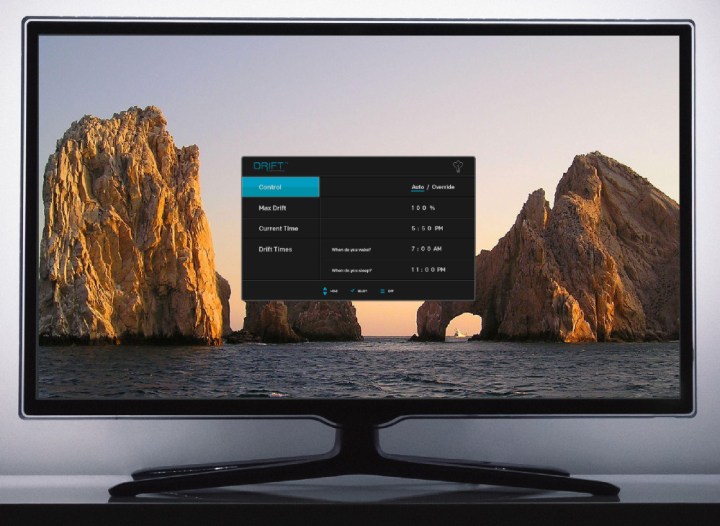
Similar to the popular F.lux app, the Drift TV is a hardware solution in the form of a device that plugs into your TVs HDMI input, allowing you to program the device to slowly dim the amount of blue light emitted by the screen based on the time of day, your sleep schedule, and more. The Drift TV is set to retail for $100 when it debuts in stores and online this December.
Saffron, the company behind the new device, cites a Harvard study which concluded that blue light at night is bad for melatonin production in the body, and can have negative overall health affects on those who frequently watch programming, or use their computers or mobile devices late at night.
While software solutions like F.lux, Redshift, and Twilight are available for computers and cell phones, the Drift TV is the first device we’ve encountered that’s capable of providing a blue light-filtering solution for televisions, and may be a smart item to consider for those who frequently keep their TVs humming after the sun goes down.
That said, it make take some getting used to. Users who view video content on streaming services such as Netflix with blue-dimming software enabled sometimes report the software negatively affects the appearance of darker scenes. Further, color specialists often perfect the ratio of light and dark images by using blue-heavy hues, meaning that removing the blue light can definitely effect the color accuracy.
However, Drift TV rightly assumes that a slightly-worse viewing experience is a small price to pay for a more restful night’s sleep, not to mention the potential to lower one’s risk of serious diseases such as diabetes and heart disease.
The device itself is only capable of working with one TV at a time, but it is compatible with HDMI switches, which would allow owners to plug in multiple screens, provided they have long enough HDMI cables and conduit to reach from the splitter to their home’s various television locations.
The Drift TV is not available for sale yet, but the company hopes to have it in time for the holiday season.



